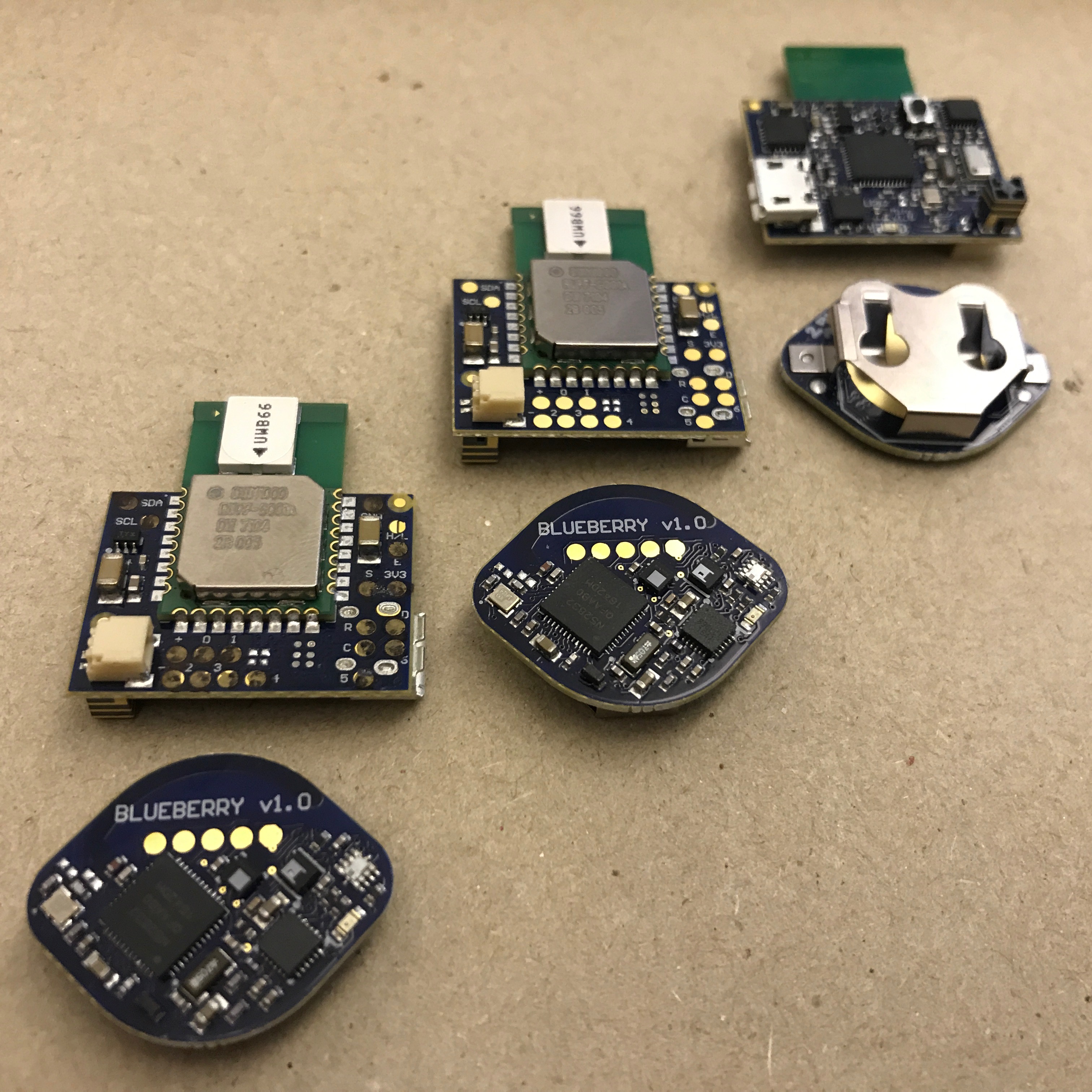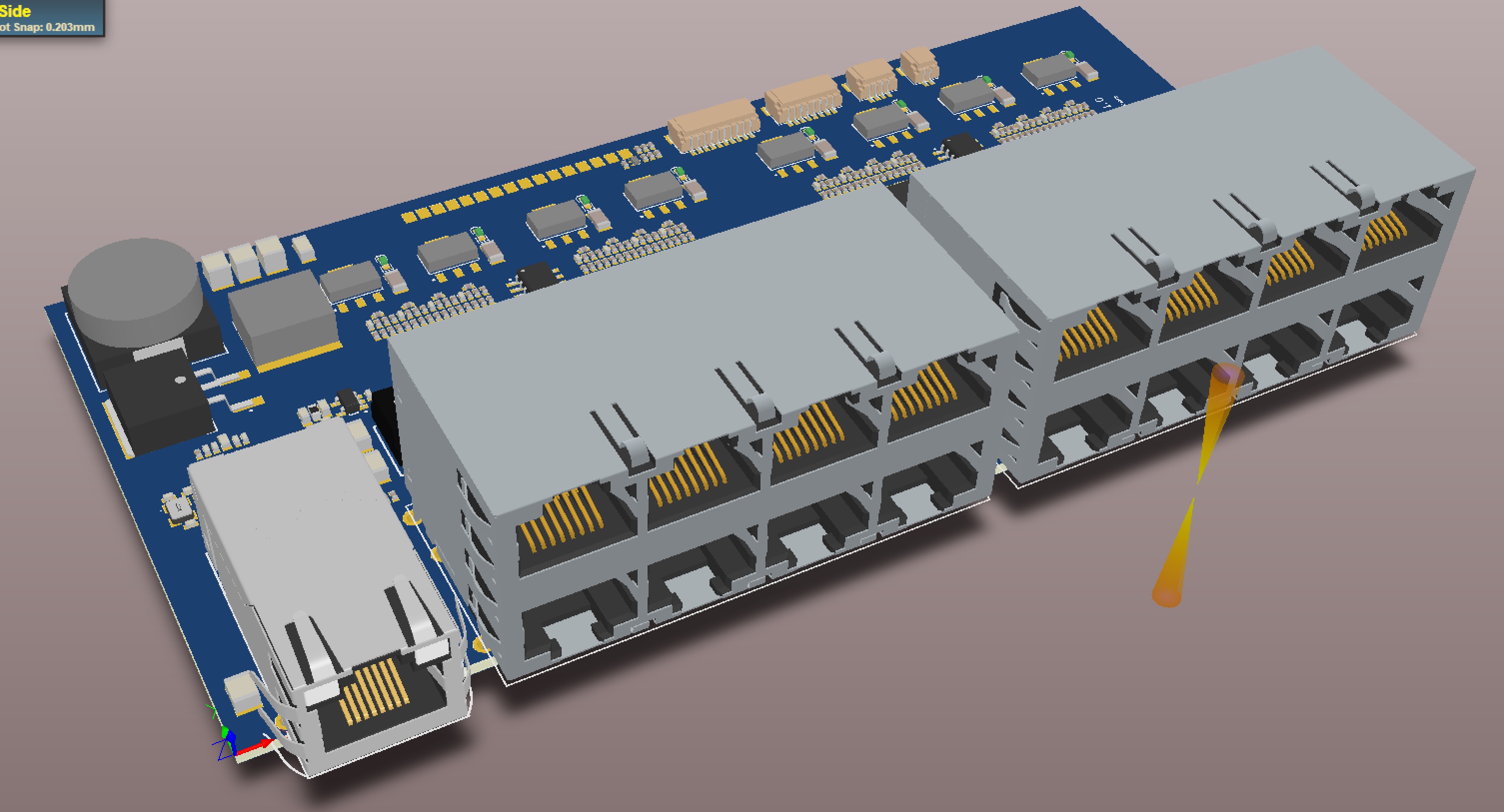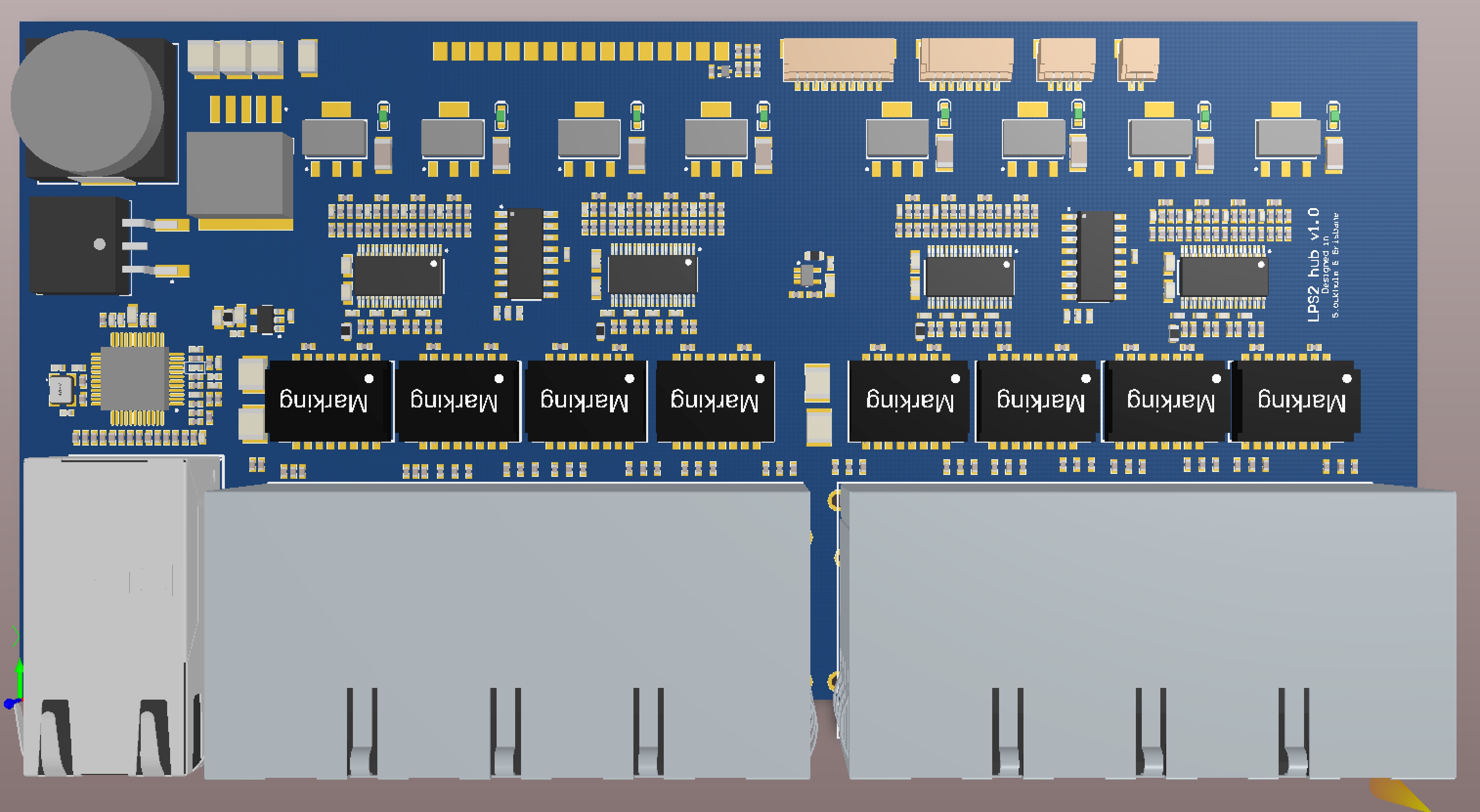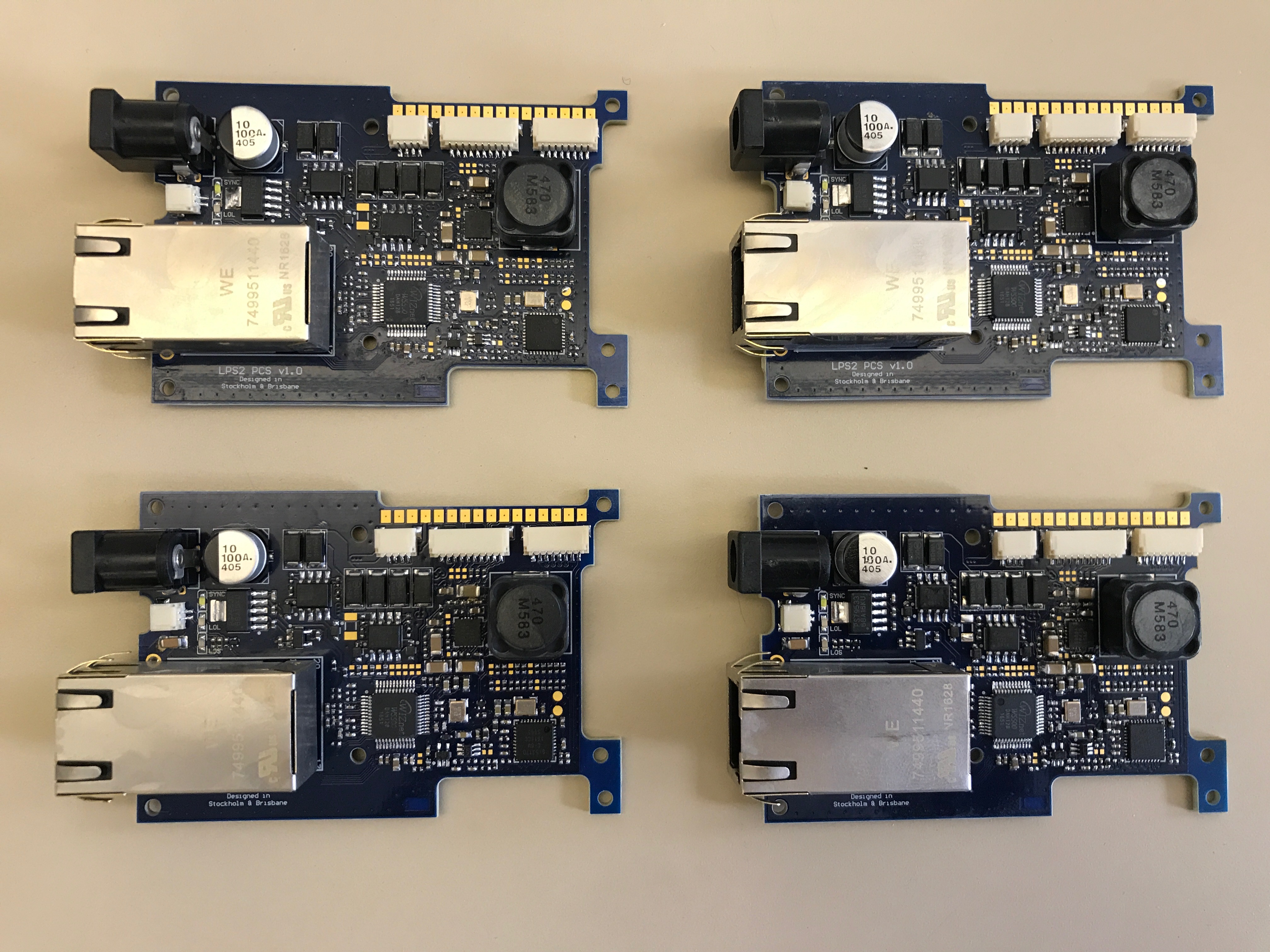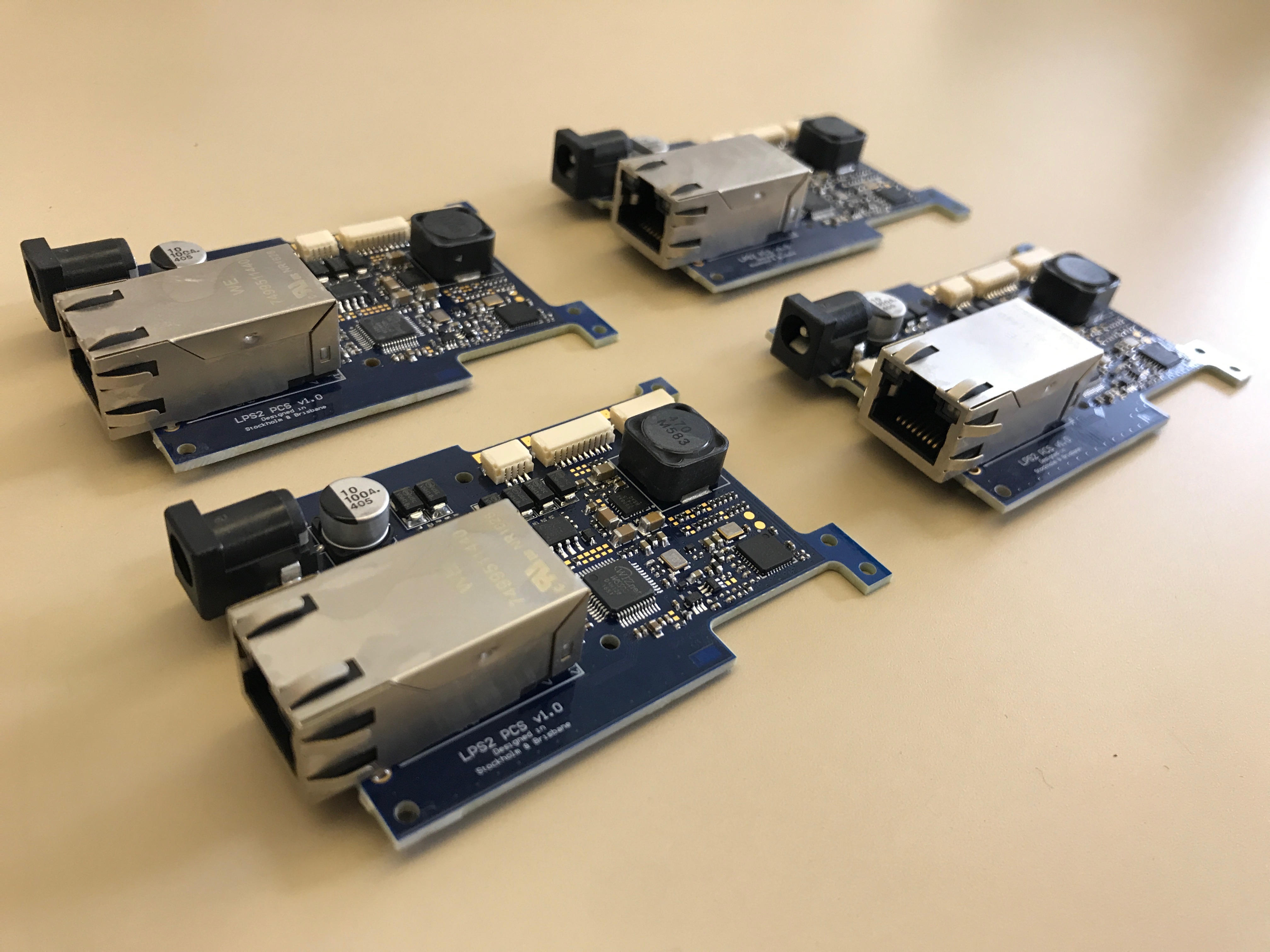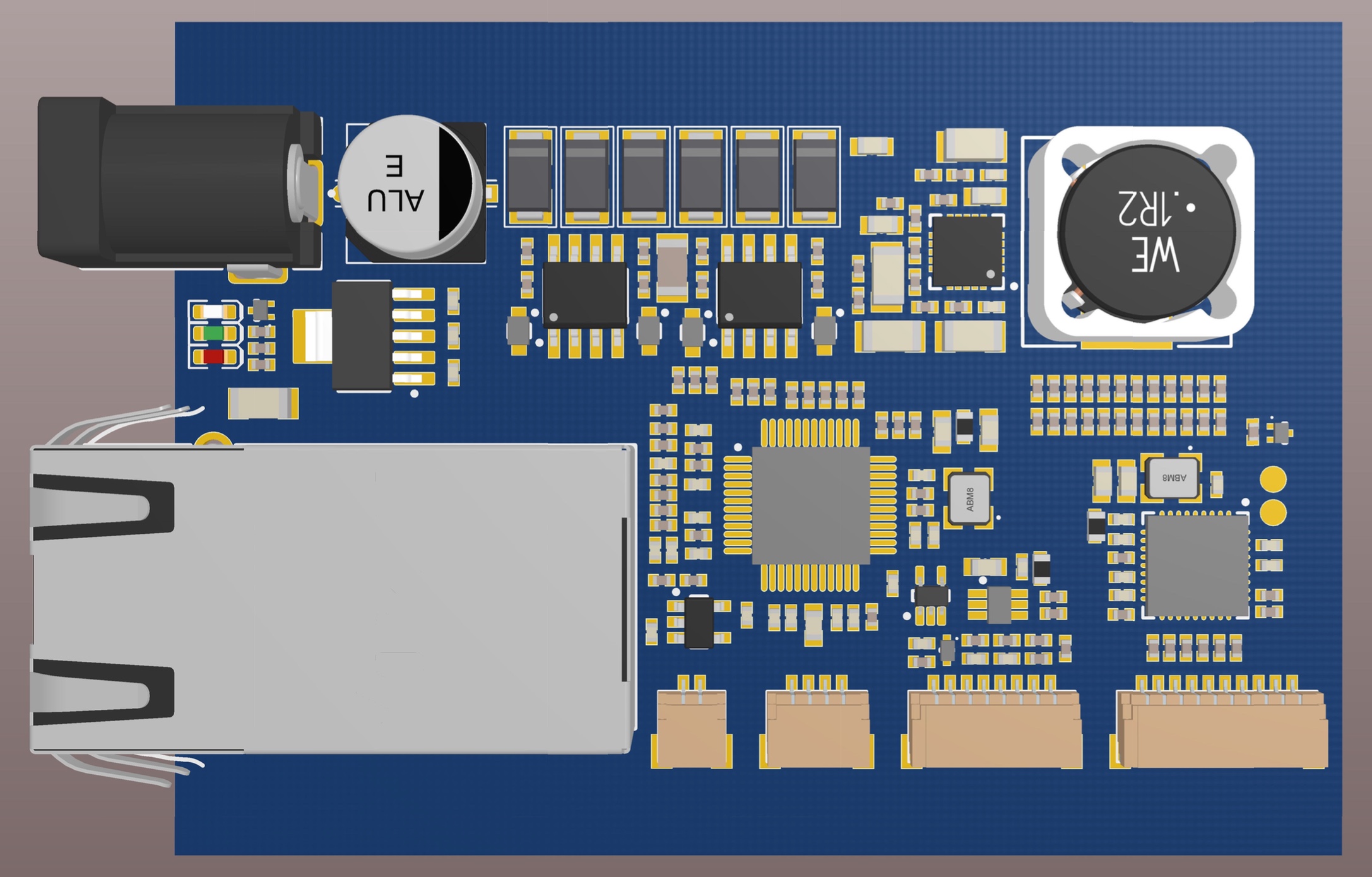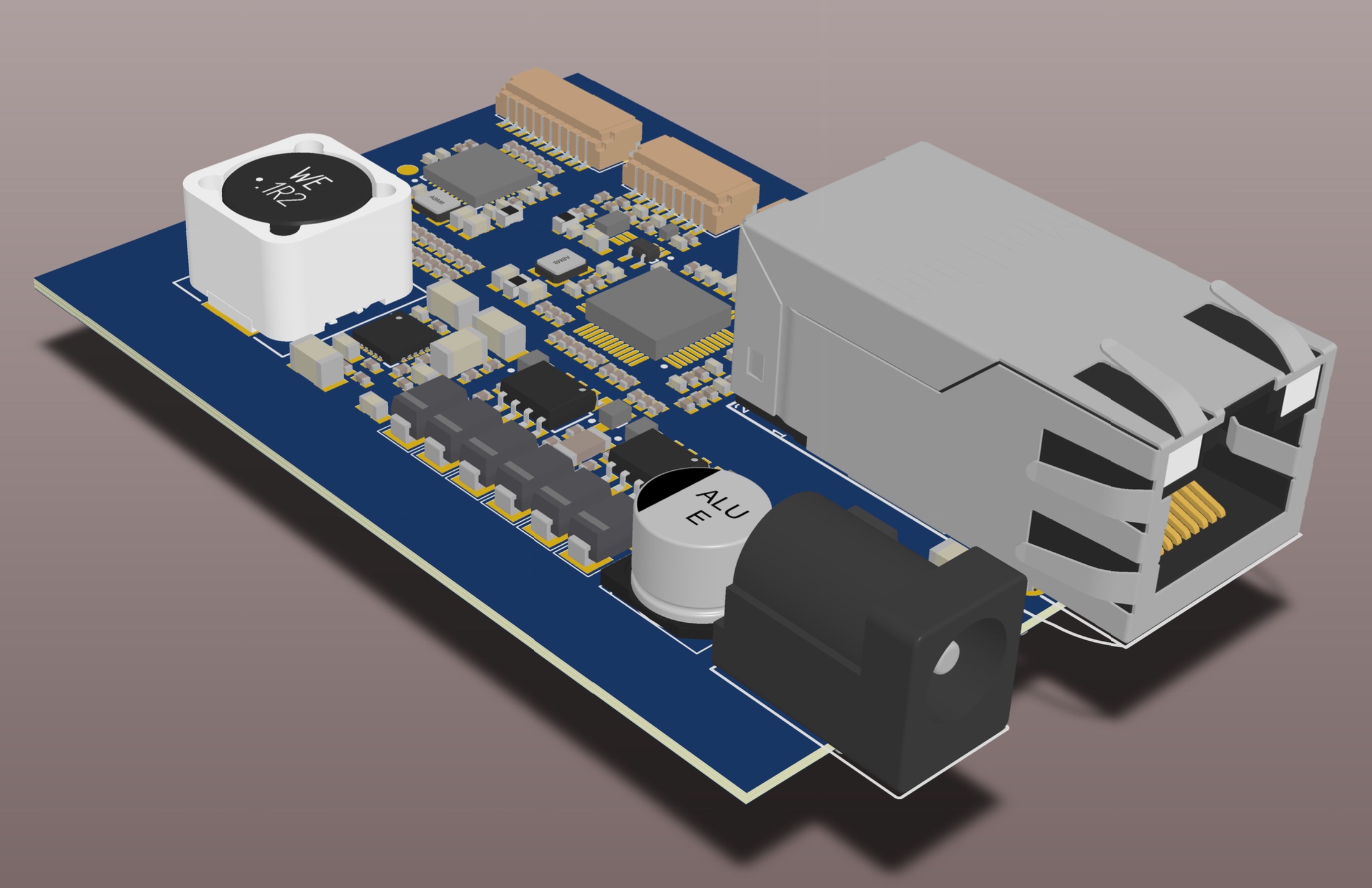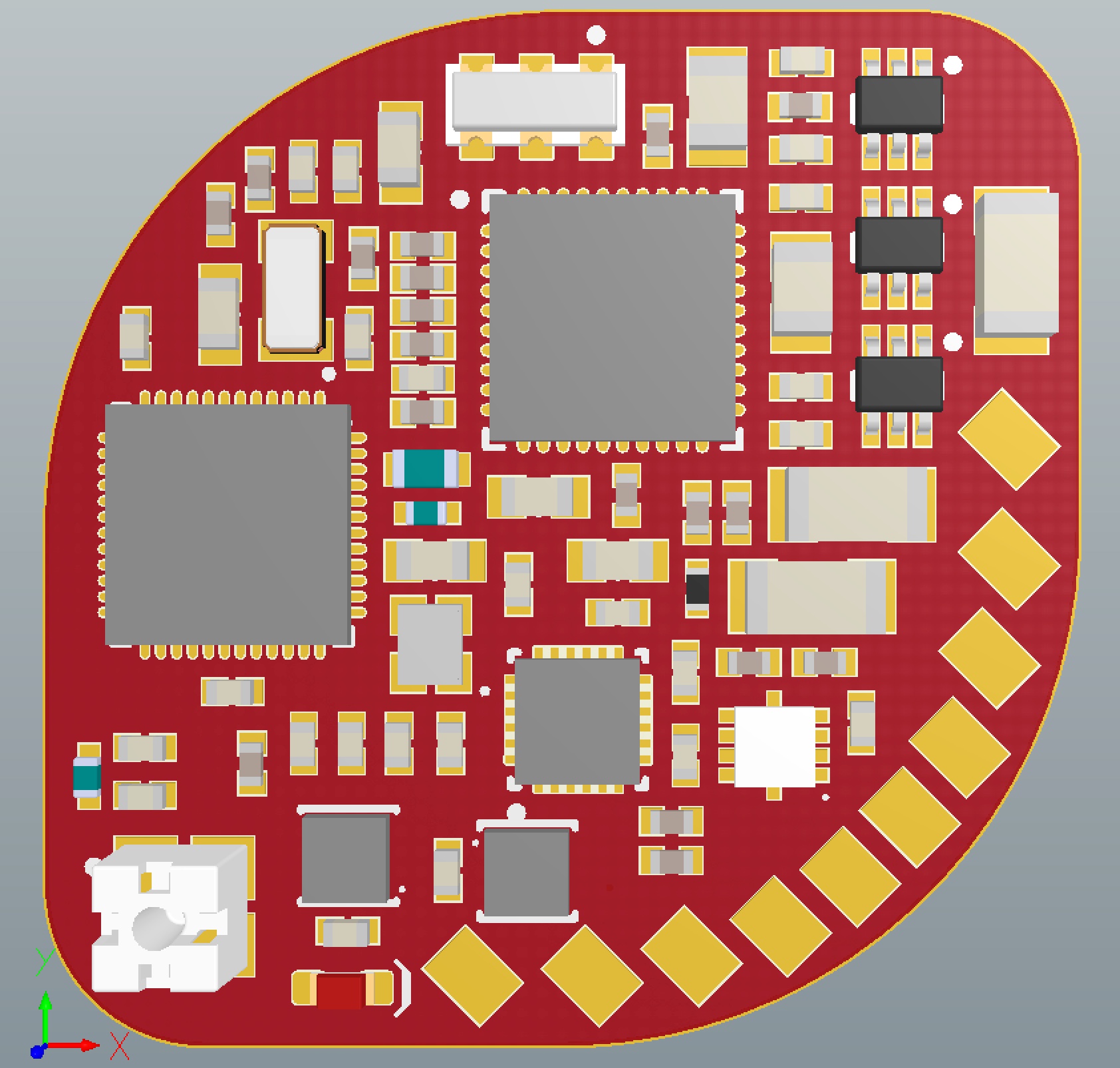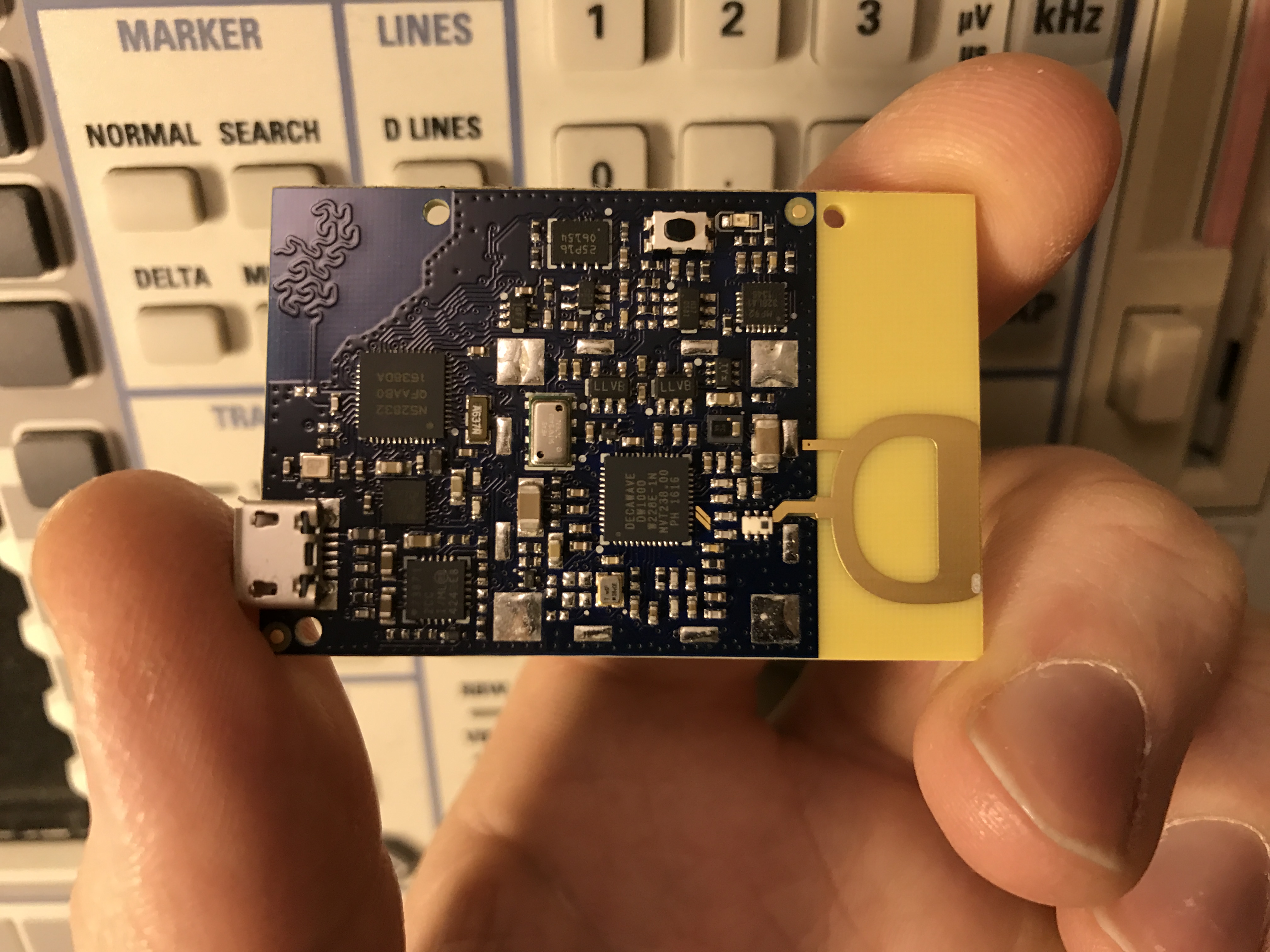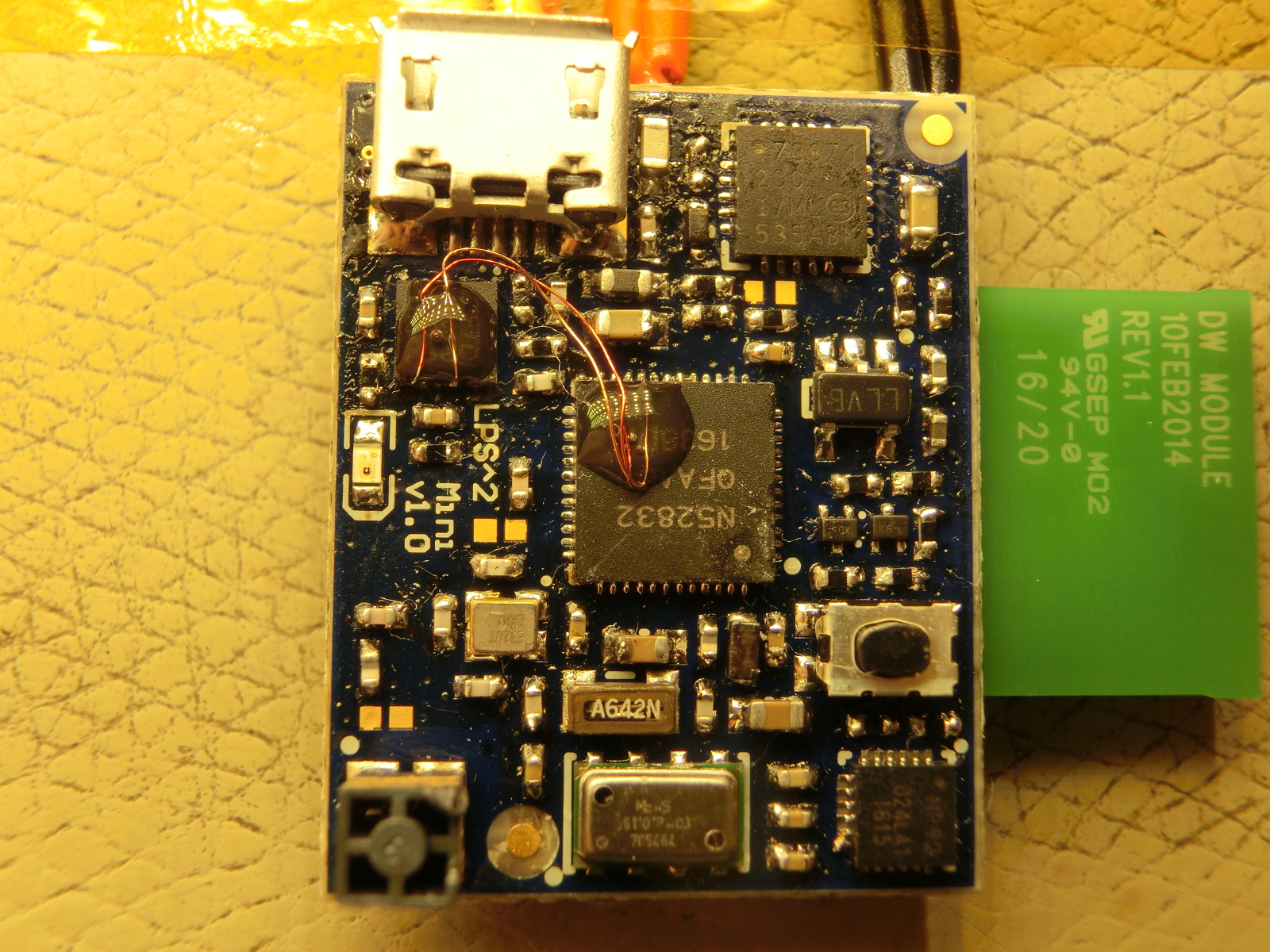-
Sneak peek: UWB radar
09/08/2019 at 12:51 • 0 comments -
LPS2 AoA
09/30/2017 at 14:32 • 2 commentsThis is a little preview of our upcoming LPS2 AoA:
It has an on-board WiFi module with web server. This is an early demo thereof:
-
LPS2 nano
09/30/2017 at 14:02 • 0 commentsMeet our latest board LPS2 nano! Prototypes are currently being produced. It is compatible with Decawave's new DWM1001, but adds more sensors (acc/gyro/compass/altimeter instead of just accelerometer) and ability to handle external clock and sync. With two or more boards fed with the same 38.4 MHz and sync signal, it is possible to do Phase Difference of Arrival (PDoA) --> Angle of Arrival (AoA).
LPS2 nano can work stand-alone or be used with our upcoming carrier boards for WiFi, Ethernet, LoRa, Sigfox, GPS, drones, etc. We have made a separate Hackaday project page for LPS2 nano: https://hackaday.io/project/27532-lps2-nano
-
We are now shipping LPS2 Mini and Blueberry!
05/15/2017 at 12:45 • 0 commentsHere comes some updates regarding our LPS and Berry product families!
==== Short version for existing customers ===
* We are now shipping LPS2 Mini and Blueberry! With the boards you will get demo software to access the sensors and, in the case of the LPS2 mini, Two Way Ranging (TWR) capability. The software is not written for the Arduino IDE like our previous generation of boards, but instead in C using the Nordic SDK for the nRF52 and compiled with GCC. We can also provide Python drivers for ROS. More advanced features such as TDoA and wireless distribution of clock and sync to be sold separately.
* HW for building wired networks for distribution of clock and sync is in the making.
=== Long version for both old and new customers ===
There are three main principles when measuring distance and figuring out a position using radio: Received Signal Strength Indication (RSSI), Time of Flight (ToF) and Angle of Arrival (AoA).
* RSSI is simple, but suffers from severe problems as soon as the signal path is blocked and attenuated. BLE beacons use this technique, making them ideal for cheap proximity sensors, but not good enough for navigation.
* ToF measures the time it takes for a radio wave to travel a distance at the speed of light. This requires complex hardware, but is a lot more reliable than RSSI. By using extremely short transmissions/pulses, reflections in nearby objects will not overlap with the direct wave at the receiver. This will, in theory, prevent the effects of so called multipath fading. Transmitting short pulses is the equivalent of using a very wide bandwidth, hence the name Ultra WideBand radio (UWB).
* AoA requires more than one antenna to figure out the direction of the incoming wave. Contrary to RSSI and ToF it reports an angle, not a distance. This method has been extensively used for naval navigation, where a ship takes bearings to known radio beacons.
No matter the method in use to do the actual measurements, a position in space can be calculated using a geometrical process called trilateration. Adding filters to the process will further improve the result. All this functionality is often integrated in a so called location engine.
ToF can be put to work using three main principles: Two Way Ranging (TWR), Time Difference of Arrival (TDoA) or Reverse TDoA (RTDoA):
* TWR is a simple method performed point to point between a moving tag and one or several anchors acting as reference points with known positions. TWR works well when tracking a limited number of objects, but the update rate decreases the more tags asking around for distances. This was our initial approach and is used with our robot beds: http://www.loligo.se/roaming_beds/. If you are in Oslo you can take a look at them here: http://henieonstadsanatorium.no/en/event/unik-overnattingsmulighet-på-henie-onstad-kunstsenter
* In its pure form TDoA has tags that only transmit and anchors that only listens. Anchors collect and sends time stamped UWB packages to a central server, where a location engine compares the different arrival times and calculates tag positions. With many active tags, collisions will occur putting an upper limit to the throughput and number of active tags in a TDoA system. Some kind of synchronization also among tags can thus be useful to achieve highest possible update rate and number of active tags. The problem is that reception costs more power than transmission, so enabling the receiver once in a while to get synchronization packages has a negative impact on tag battery life. TDoA is well suited for tracking people in offices: Lowest possible power consumption combined with large number of tags.
* In RTDoA things are turned on its head. Synchronized anchors transmit packages one after another and tags listen. The location engine is run locally in each tag. Such a set-up has no upper tag limit and has the lowest possible latency for the tag to know its own location, to the cost of using the power hungry receiver instead of the transmitter. A way to limit the problem is yet again some kind of time synchronization between anhors and tags, so that tags can sleep most of the time and only listen when needed. RTDoA is very well suited for flying drones or similar applications, where high update rates and low latency are the main concerns.
What method to use depends on required update rate, number of tags to track, latency, required battery life, infrastructure and if the tag shall know its own position or not.
Our new LPS2 generation of boards can handle all the above mentioned UWB based ToF roles and as a bonus act as a BLE beacon. We also have a product family called Berries in the making, with many sensors and BLE. First out on the market are LPS2 Mini and Blueberry. We have alredy begun shipping them:![]()
https://www.instagram.com/p/BUHEjfIFdhk/
https://www.instagram.com/p/BUHEMZLlEs7/
http://www.loligo.se/LPS2_mini/LPS2_mini.pdf
http://www.loligo.se/Blueberry/Blueberry.pdf
They come pre-loaded with a demo firmware and bootloader allowing for FW upgrades via BLE. Source code will be availble as C code to be compiled with GCC for nRF52. Advanced features like wireless distribution of clock and synk, TDoA, RTDoA, filtering and location engine are not included in the basic package, but can be purchased separatley. The included demo code for LPS2 Mini will handle on-board sensors, data streaming via BLE / USB and TWR. Blueberry has no UWB, but several extra fun sensors. Its demo application will come in two flavours: motion analysis or data logger / weather station.
Our old Arduino compatible LPS1 generation is still available and we will produce more whenever needed:
http://shop.loligo.se/product/lps
http://shop.loligo.se/product/lps-mini
https://hackaday.io/project/7183-lps-mini
Its 8 bit AVR processor is not powerful enough to run its own location engine, so RTDoA is out of the question unless it is supported e.g. by a Raspberry Pi as a backend math wiz. Even though its limitations we have managed to run TDoA with wireless clock and sync distribution also on LPS1!
Wireless clock and sync distribution is very practical, but suffers from a time uncertainty on top of the location uncertainty (time and distance are just two sides of the same coin). This adds up to a 20 cm uncertainty, instead of the 10 cm achievable with TWR. This is good enough for many applications, but wired clock and sync distribution is needed in TDoA/RTDoA applications to get highest possible performance. We are working on a board called LPS2 HUB to inject clock, sync and PoE via pair 3 and 4 in up to eight CAT5 or CAT6 cables, while using pair 1 and 2 for 10/100 Mbit ethernet. Several LPS2 HUB boards can be connected to form large clock/sync distribution networks. Currently LPS2 HUB only exist in the CAD program, but we are working hard on producing the first prototypes:![]()
![]()
In the receiving CAT 5/6 cable end a board called LPS2 PCS (as in Power Clock and Sync) translates and provides our upcoming anchor LPS2 with ethernet, jitter cleaned clock, sync and PoE. LPS2 PCS has left the CAD stadium and exists as prototypes:![]()
![]()
LPS2 itself has left its prototype stage and is currently being produced.
We have more fun things cooking in the lab (e.g. a textile exhibition for a museum and a super cheap solar powered lamp for Kenya and Syria), but more about them some other time. Please feel free to drop us an email, or come and visit in Stockholm or Brisbane! In Stockholm we will force you to make your own laser marked pens. In Brisbane you will have to pat the lab cat and eat mangoes.
Best Regards,
Niklas Casaril and Göran Nordahl -
LPS2 PCS in production!
04/11/2017 at 08:09 • 0 commentsThis is how LPS2 PCS turned out:
http://www.loligo.se/LPS2_PCS.wmv
Here in red together with LPS2:
http://www.loligo.se/LPS2_PCS_with_LPS2.wmv
The first hand built prototypes will be ready in 1-2 weeks. Next up is designing HW for the clock and sync distribution network. LPS2 PCS is just the endpoint.
-
LPS2 PCS preview
04/03/2017 at 12:12 • 0 commentsHere is a preview of our upcoming LPS2 PCS board (PowerClockSync). It is intended as an add-on to LPS2 with the following features:
* Power supply via PoE or wall adapter.
* Ethernet (10/100 Mbps) as a complement to the optional WiFi on LPS2.
* Receiver for clock and sync via spare twisted pairs in the ethernet cable.
* Jitter cleaner for received clock.
![]()
![]()
-
New LPS boards and a little Blueberry soon in production!
02/02/2017 at 11:20 • 1 commentHello,
We have four new boards soon to be sent to production: LPS^2, LPS^2 Mini, LPS RPi and Blueberry:
=== LPS^2 ===
https://www.instagram.com/p/BOMsHQ8h54t/?taken-by=loligoelectronics
* First board of our new LPS^2 family.
* nRF52 as MCU, i.e. ARM Cortex M4F.
* USB.
* BLE.
* Can act as RFID tag (untested).
* Optional WiFi.
* DW1000 for UWB.
* Clock and sync handling/distribution for TDoA/AoA
* Accelerometer, gyro, compass, altimeter, thermometer.
* TCXO to eliminate the thermal drift of DWM1000.
* Optional external FLASH for data storage.
* LiPo charger with power either from USB or a small solar panel.
* Size: 34x52 mm, but it will most likely be a little wider in the production version.
=== LPS^2 Mini ===
https://www.instagram.com/p/BNr0aiZhzX-/?taken-by=loligoelectronics
* Second board of our new LPS^2 family.
* nRF52 as MCU, i.e. ARM Cortex M4F.
* USB.
* BLE.
* Can act as RFID tag (untested).
* DWM1000 for UWB.
* Accelerometer, gyro, compass, altimeter, thermometer.
* LiPo charger with power either from USB or a small solar panel.
* Size: 25x30 mm.
=== LPS RPi ===
http://www.loligo.se/LPS_RPi.jpg
* Plug-in board for Raspberry Pi. We see this board as a cheap way to try out DWM1000 and as a tool for analysis.
* DWM1000.
* DIP for address setting.
* Altimeter.
=== BLUEBERRY ===
https://www.instagram.com/p/BORWzUHBIoa/?taken-by=loligoelectronics
https://www.instagram.com/p/BOR_GLkh7-6/?taken-by=loligoelectronics
* First board of our new family of small berries.
* A bit like LPS^2 Mini without UWB and USB, but with more sensors. Can e.g. be used for motion analysis or as a weather station.
* nRF52 as MCU, i.e. ARM Cortex M4F.
* BLE.
* Accelerometer, gyro, compass, altimeter, thermometer, RH, light, UV + a few I/O.
* Battery holder for CR1632.
* Size: 20x20 mm.
=== CRANBERRY ===
*** Exists as HW prototypes, but does not yet fully work. Something in the strain gauge interface consumes too much power. Only listed here as an example of an upcoming board. ***
https://www.instagram.com/p/BOXEmRIhkrs/?taken-by=loligoelectronics
* Second board in our new family of small berries.
* Identical to Blueberry, except that it also handles strain gauges, has a larger battery and thus also larger size.
* Battery holder for CR2032.
* Size: 26x26 mm.
=== CLOUDBERRY ===
Does only exist in CAD, not yet as a physical prototype. Intended to connect both the Berry and LPS^2 families to the internet using either WiFi or LoRa. Might also have the option of GSM, depends on customer need.
We would like to probe your interest in these boads, and if possible, receive pre-orders for the ones soon to be sent to production (LPS^2, LPS^2 Mini, LPS RPi and Blueberry). Pricing will depend a bit on the initial production volume. We do not yet know their final price, but Blueberry and LPS RPi will be cheapest and LPS^2 and LPS^2 Mini somewhere around the price for our current LPS boards. Possibly with the exception for a fully equipped LPS^2 (WiFi, extra FLASH, etc) that will cost more. We do not want any money up-front, but really would appreciate very quick payment after shipment. That way we can afford paying the factory in time… :-) We estimate a delivery time of 4-6 week for all boards except LPS^2 that will take a little bit longer (something like 8 weeks).
If you have not yet reached your weekly youtube limit, here is a little video showing our test rig for Angle of Arrival (AoA):
https://youtu.be/D9BWkx_0Sz8
Some explanations:
* Distance between receiver boards (two modified LPS boards to handle external clock and synk + better antenna) is 300 mm.
* The x axis shows time.
* The y axis shows difference in distance to the tag.
* The blue dots are individual measurements and the green line is the mean value.
* Both TDoA and TOF can be used, i.e. both angle and distance to the tag can be measured.
* In the bottom of the screen values for TDOA, TOF (if enabled) and RSSI are shown.
* At 0:20 a slider in the web interface controls the rig orientation. Much easier to rotate the rig than running around with the tag.
* At 1:30 an additional degree axis is activated in the settings menu.
* At 2:28 TDOA+TOF is deactivated, so that only TDOA is shown in the bottom of the screen. This allows for higher update rate.
* At 3:03 txpower settings are played around with, with resulting changed RSSI seen at the lower part of the scrren. All DW1000 settings are available via the settings tab, making test and evaluation easy.
* The UI was recorded in Brisbane, Australia and the webcam in Stockholm, Sweden. Hence the delay and artifacts - sorry about that.
For us this test rig has led to valuable insights on how DW1000 operates and was important in the development of LPS^2 and its AoA abilities. It is important to note that our AoA implementation so far only works well with free line of sight. It might be possible to handle less favourable conditions by looking more closely at the registers of DW1000 to filter out reflections. For AoA uniform antenna group delay is very important, so using the same type of ceramic patch antenna as on DWM1000 is not possible.
If you happen to pass by Stockholm or Brisbane, feel free to come by and say hello!
Best Regards,
Göran Nordahl and Niklas Casaril -
Cranberry
12/23/2016 at 13:16 • 0 commentsYet another little board based on LPS^2 Mini (but without UWB) is ready for the factory! Cranberry has the same features as Blueberry (BLE/acc/gyro/compass/altimeter/RH/temp/light/UV), but can also handle up to four strain gauges / load cells! Size 26x26x9 mm, compared to 20x20x6 mm for Blueberry. Battery size CR2032 instead of CR1632.
![]() http://www.loligo.se/Cranberry/Cranberry.wmv
http://www.loligo.se/Cranberry/Cranberry.wmv -
LPS^2 prototypes in the lab
12/19/2016 at 10:58 • 9 commentsLPS^2 prototypes just arrived! No smoke at power-up. Next step is the HW equivalent of "Hello, World!", i.e. flashing a LED.
![]()
-
What is not in the CAD is solved with patch wire
12/14/2016 at 09:56 • 0 commentsOoops, missed connecting UART to the USB chip on the LPS^2 Mini prototypes. With help of some patch wire all HW now seems to be fully functional.
![]()
 Göran Nordahl
Göran Nordahl